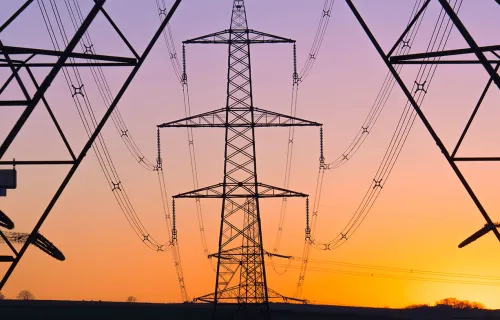About Generg
The Generg Group has been building and operating renewable power plants in Portugal for over three decades. The group has a portfolio of 487MW in operation in Portugal, including 436MW of wind power, 33MW of hydroelectric power and 18MW of solar power. They also control the performance of other Portuguese wind assets, bringing their global installed capacity up to 750MW. Generg’s diverse and growing portfolio consists of various renewable technologies, using equipment from a range of manufacturers.
Ambitious expansion plans are on the cards, with Generg looking to acquire renewable energy plants in countries across Europe. They also hope to integrate these with other assets of Novenergia Group (currently the only shareholder) on a single control platform.
What Generg needed
Generg’s diverse portfolio was spread across the length and breadth of Portugal, and they were using an internal solution for real-time monitoring purposes. Generg wished to have a common infrastructure for the monitoring and remote control (in real time) of all of their renewable assets, including wind, solar and hydroelectric power plants, substations and meteorological stations. In addition, they required an automatic historian database to manage and improve the operational performance of these assets, and reduce the time analysts dedicated to this task.
Generg was also on a high growth trajectory and planned to expand both within Portugal and internationally. To support their plans, the company needed a solution that could be scaled up quickly, with minimum disruption to daily operations.
Applying innovation to streamline and boost operations
CGI provided Generg with a solution based on our Renewables Management System (RMS), called the Energy Management System. This solution comprises three modules:
- Data gateway: Scada module to interface with all the renewable power plants across Generg’s portfolio, and normalize data from all the various makes and models of equipment.
- Control Center: Centralizes and handles the real-time monitoring, supervision and remote control of Generg’s renewable assets and substations. It supports real-time alarm and event management, and includes mobile platform capabilities.
- Performance management: Handles the operational performance management of all the renewable assets. It is built on a database which supports a high volume of operational data, alongside a range of analysis and reporting tools – such as production analysis, availability management and efficiency improvement – that can be accessed via web and mobile interfaces.
The heart of operations: Real-time control center
CGI’s software solution operates Generg’s new dispatch center in Lisbon. This center enables the real-time monitoring and control of all of Generg’s production assets, substations, and other relevant equipment, across the wind, hydroelectric and solar technologies in their portfolio. The solution interfaces with the Portuguese TSO Redes Energéticas Nacionais (REN), and handles the command/ dispatch of TSO instructions. It is also the information hub for all of the historical operational data which is used to identify trends and key performance indicators for detailed performance analyses.
New tools revolutionize analysis and reporting tasks
The tools that have brought the most value to the client within the Performance Management suite are the analysis and reporting tools.
Previously, the analysis of actual power curves versus those guaranteed by manufacturers was achieved by gathering a large volume of data from various SCADA systems and compiling it manually. This was a very time consuming and laborious process for the analyst, and took a long time to complete.
With CGI’s new tools, this process has been centralized and automated. This means that results are now instantaneous. This has greatly improved the analysts’ work, particularly in the areas of asset efficiency and availability. The reduction in time required to deliver complex analyses from weeks to seconds has contributed to improved performance, and allows the real-time detection of underperforming turbines, paving the way for performance improvements.
Furthermore, the platform is now a key part of Generg’s dialog with manufacturers, so that claims on contract guarantees and the capture of benefits and compensations can be managed quickly and easily, reducing downtimes.
The solution also includes a status engine with algorithms customized for each manufacturer, enabling the allocation of precise and accurate unavailability, automatic detection of maintenance and repair periods, and the instant calculation of reliability metrics such as MDT (mean downtime), MTTR (mean time to repair) and MTBF (mean time between failures).
Operations Planner
Generg was the first client to reap the benefits of the new Operations Planner functionality. This useful tool enables the management of planned maintenance activities over various time periods (days, weeks, months or years). It includes: a Planned Maintenance component, which lists planned maintenance jobs filtered by technology, power plant or maintenance type; an Operations Scheduler, which is used to create a work order to schedule maintenance activities at multiple power plants, and permits the import, export and printing of scheduled work orders; a Schedule Overview component, which offers a compact calendar showing an overview of the jobs scheduled for the current month; and an Upcoming Work Orders component, which lists the next scheduled maintenance activities for the assets in the chosen portfolio.
Notifications Center
The Notifications Center was also implemented for the first time at this client. It allows Generg’s analysts to create bespoke conditions to keep close track of production, availability and efficiency of their renewables assets, from a single generator up to a power plant or even the entire portfolio. A notification workflow scheme can be set up, with notifications sent to several recipients. The user can also visualize the asset on a map, in order to carry out an immediate assessment of its status.
Manual editing tool rectifies status data
This implementation of RMS included an Operating Status Manual Editor that has been very useful for Generg. The tool allows users with an operator profile to rectify incorrect operation status data acquired automatically in the field, or due to communication failures. It enables the reclassification of alarms and events, and, importantly, it allows the correct reattribution of responsibilities, such as from the client to the manufacturer.
Centralized and remote user access delivers flexibility
In addition to control center operators with access to centralized operating positions, Generg’s operations teams – which are dispersed throughout mainland Portugal – can connect remotely to the performance management platform via laptop, and the portfolio monitoring functionalities can be performed even in the field, on a smartphone, tablet or other mobile device.
A success story: Innovative and measurable results
CGI’s solution for Generg has helped the company to improve operational excellence and accrue a number of benefits, including:
- Centralized control of energy production, improved performance, and quicker control and diagnosis of stoppages, enabling the reduction of downtimes
- Automation of time consuming tasks enabling resource optimization
- Adaptation to varied regulatory regimes, and consequent alignment with different requirements for grid connections
- Creation of a unique source of operational data and indicators that enables data transparency by various internal and external stakeholders
- Powerful data-driven, insight-led decision making
- Continuous improvement, benchmarking and analysis of renewable energy production
Helping turn change into opportunity
Generg’s real-time dispatch center went live in July 2016, and the Performance Management module was implemented in 2017. This is just the beginning. A connection with the Portuguese DSO EDP Distribution is currently being integrated into the solution, and the system is now being readied to be scaled up to include Generg’s wind and solar power plants in France, Italy and Poland. Generg and CGI continue to partner together to innovate, develop and improve the technology that ensures renewables are the energy of the future.
Generg’s collaboration with CGI and our implementation of the RMS solution is a strong step towards our objective of seeking improvements in the O&M of our operational assets, and an associated increase in the efficiency of our renewable energy production.
Our next step is to attain economy of scale from the use of RMS, both by integrating Generg’s international assets into the platform, and by using the forecasting tool interfaced with RMS to aid our entry into the energy markets. The large operational database, powerful analysis and reporting tools of the RMS solution bring us a valuable opportunity to achieve predictive maintenance of our assets.




